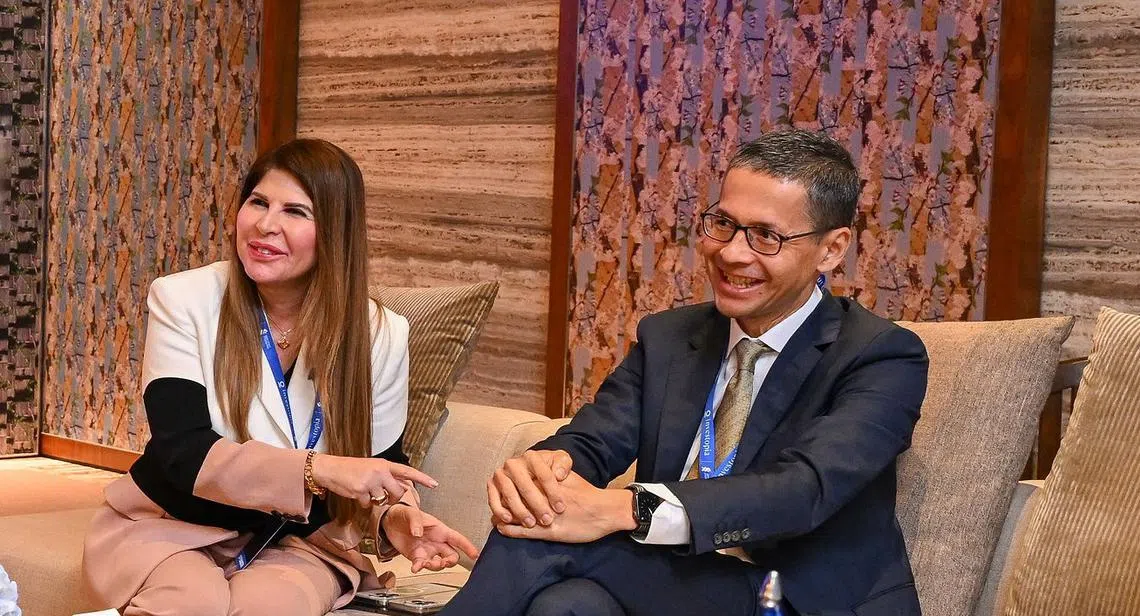Middle East growth spurs new opportunities for Asean collaboration: Standard Chartered
The UAE and Singapore are vital gateways for business between the two regions, says the bank’s Singapore CEO Patrick Lee

AMID shifting trade dynamics and a fragmented geopolitical landscape, fresh opportunities for collaboration are emerging between the Middle East and Asean – with Singapore poised to play a pivotal role.
More regional companies are looking to tap into the Middle East’s rapid growth across sectors such as infrastructure, real estate, financial services and urban solutions.
As such, Patrick Lee, the chief executive officer for Singapore and Asean at Standard Chartered, both the United Arab Emirates (UAE) and Singapore function as vital gateways for business between the two regions.
“Given what is happening on the geopolitical landscape and the shift in trade and capital flows, the world is getting a bit more fragmented. However, we are actually seeing more opportunities across our footprint, in these markets especially,” he told The Business Times on the sidelines of the Investopia Global Singapore conference on Oct 23.
With a strong complementary fit between the two hubs, StanChart’s cross-border business between Singapore and the UAE experienced “double-digit growth” in the first half of 2024.
Opportunities in the Middle East are flourishing, with the UAE making significant investments in artificial intelligence (AI) as part of its strategy to diversify beyond oil.
This push is not only positioning the country as a tech hub but also creating a surge in job opportunities within the AI sector, said Rola Abu Manneh, StanChart’s CEO for the UAE, Middle East and Pakistan.
On Saudi Arabia, she pointed out that the country is developing its infrastructure at a brisk pace. She said: “What they have done in the last five years is amazing, and this will attract capital from everywhere.”

StanChart’s presence across all 10 Asean markets gives it a distinct edge and the expertise needed to serve as a bridge between the region and the Middle East.
Abu Manneh cited an example of a UAE customer interested in acquiring a manufacturing plant in South-east Asia. Through StanChart’s investment bank, this customer can be connected with a client who is looking to divest a plant, facilitating a seamless cross-border transaction.
The bank’s innovation arm, SC Ventures, also plays an important role. Within its portfolio, there are many entrepreneurs with the network and connection to help link the two regions.
Said Lee: “We are not going to be able to outcompete DBS in Singapore, or the big local banks in the UAE, but... if customers want to connect between the two regions, that’s our value-add.”
On the sustainability front, Abu Manneh noted that the bank has been active in sustainable trade finance products and sustainable deposits. A number of StanChart’s private banking clients are also keen to invest in sustainable funds.
For an oil-exporting country like the UAE, sustainability is a journey where you have to keep investing, said Abu Manneh.
The same goes for markets in South-east Asia. For instance, Singapore does not have many renewable energy sources, so it imports power and invests significant amounts in its energy transition.
“We have been very active in helping projects in Singapore and the region (when it comes to) new sources of renewable energy,” said Lee.
Decoding Asia newsletter: your guide to navigating Asia in a new global order. Sign up here to get Decoding Asia newsletter. Delivered to your inbox. Free.
Copyright SPH Media. All rights reserved.

